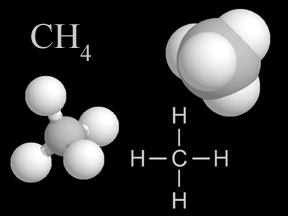Shown here are four representations chemists use for methane. In the colored models, carbon is light gray and hydrogen is white.
Click on image for full size
Windows to the Universe original artwork by Randy Russell.
Methane - CH4
Methane is gas
that is found in small quantities in Earth's
atmosphere. Methane is the simplest hydrocarbon,
consisting of one carbon atom and four hydrogen atoms.
Methane is a powerful greenhouse
gas.
Methane is flammable, and is used as a fuel worldwide. It is a principal component
of natural gas. Burning methane in the presence of oxygen
releases carbon dioxide
and water vapor:
CH4 + 2 O2 → CO2 + 2 H2O
Although the concentration of methane in Earth's atmosphere is small (around
1.8 parts per million), it is an important greenhouse
gas because it is such a potent heat absorber. The concentration of methane
in our atmosphere has risen by about 150% since 1750, apparently largely due
to human activities. Methane accounts for about 20% of the heating effects by
all of the greenhouse gases combined. Both natural and human sources supply
methane to Earth's atmosphere.
Major natural sources of methane include emissions from wetlands and oceans,
and from the digestive processes of termites. Sources related
to human activities include rice production, landfills, raising cattle and
other ruminant animals (cow burps!), and energy generation.
You might also be interested in:
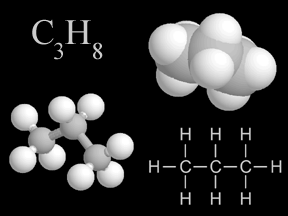
There is a large class of important chemical compounds whose molecules are made up entirely of carbon and hydrogen atoms. These compounds, as a group, are called "hydrocarbons". Hydrocarbons are the critical
...more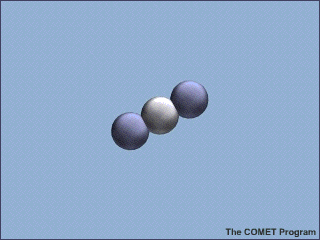
Less than 1% of the gases in Earth's atmosphere are called greenhouse gases. Even though they are not very abundant, these greenhouse gases have a major effect. Carbon dioxide (CO2), water vapor (H2O),
...more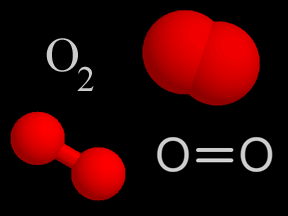
Oxygen is a chemical element with an atomic number of 8 (it has eight protons in its nucleus). Oxygen forms a chemical compound (O2) of two atoms which is a colorless gas at normal temperatures and pressures.
...more
Carbon dioxide is a colorless and non-flammable gas at normal temperature and pressure. Although much less abundant than nitrogen and oxygen in Earth's atmosphere, carbon dioxide is an important constituent
...more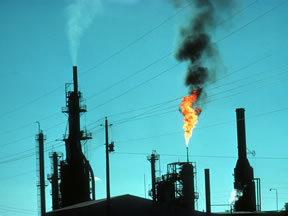
Air pollution comes from many different sources. Natural processes that affect air quality include volcanic activity, which produce sulfur, chlorine, and ash particulates, and wildfires, which produce
...more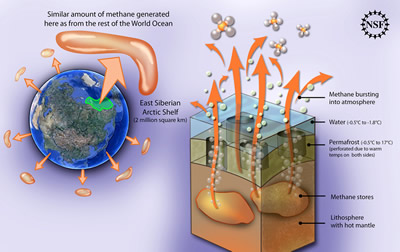
A section of the Arctic Ocean seafloor that holds vast stores of frozen methane is showing signs of instability and widespread venting of the powerful greenhouse gas, according to the findings of an international
...more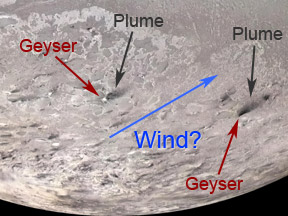
Triton, by far the largest moon of Neptune, is slightly smaller than Earth's Moon. Triton has the coldest surface temperatures in our Solar System. Surprisingly, this frigid moon has an atmosphere, albeit
...more


